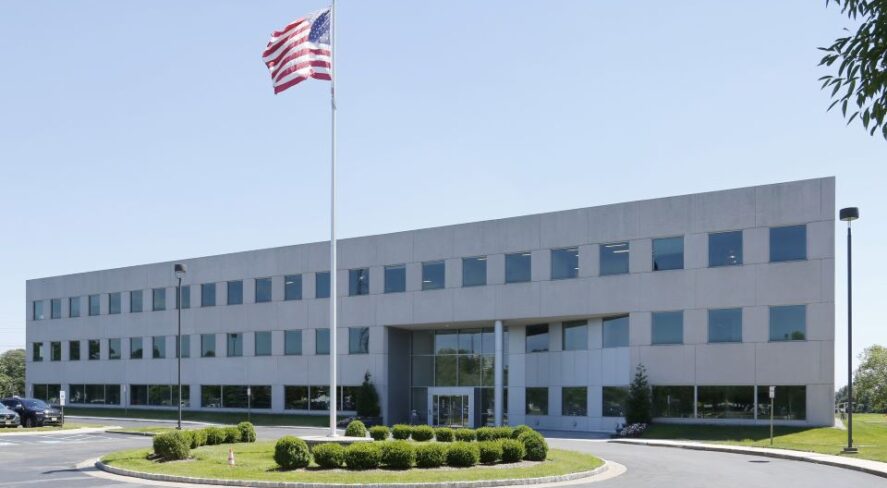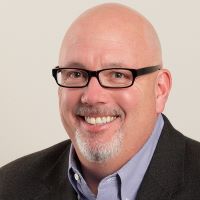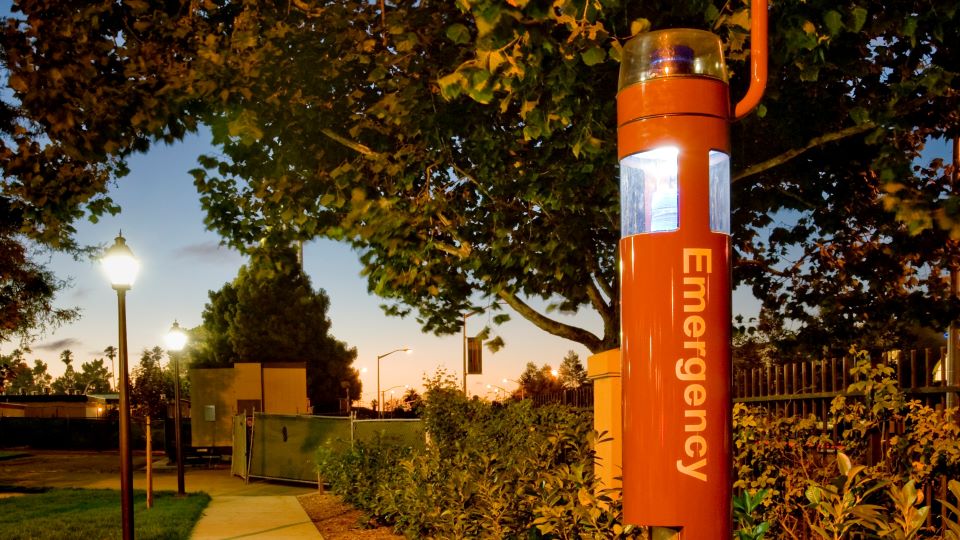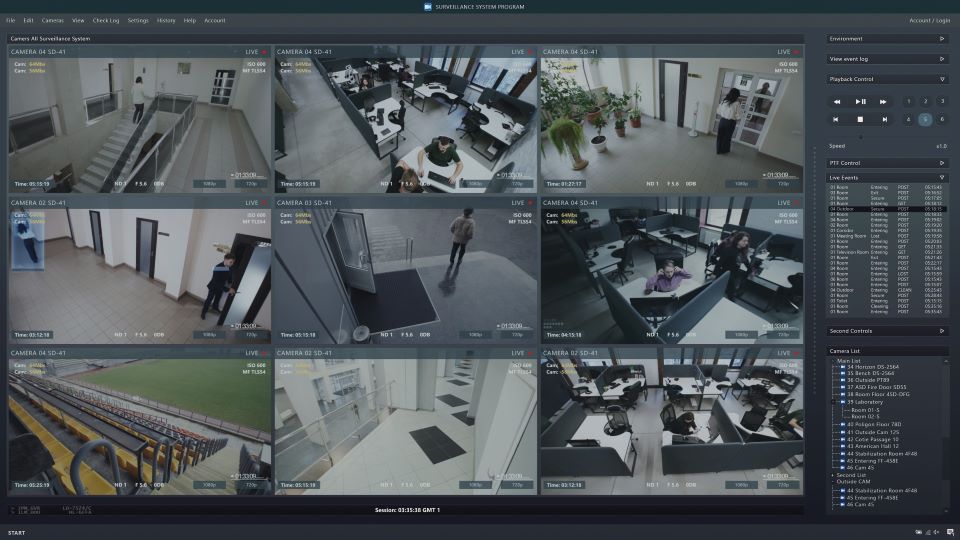SIA New Member Profile: IXP Corporation

New Security Industry Association (SIA) member IXP Corporation provides emergency communications consulting, technology and managed services for public safety, governments, campuses and private industry. The company is headquartered in Princeton, New Jersey, with a nationwide base of clients.
SIA spoke with Michael Anderson, director of security services at IXP Corporation, about the company, the security industry and working with SIA.
Tell us the story of your company.

Michael Anderson: IXP Corporation is a public safety services company. Our professional services team provides consulting services to local government agencies, universities and colleges, hospitals and health care systems and private commercial industry clients on business continuity planning, emergency management and public safety technology, governance and operations. These assessments and plans provide recommendations that form the foundation of their master plans and long-term vision. IXP managed services offerings deliver long-term, financially sustainable 911/311 emergency communications services and behavioral health solutions to local governments, colleges, universities, medical campuses and health care providers. IXP is the market leader for privatized 911 managed services and the “go-to” company for tackling public safety’s toughest challenges.
Founded in 1999 and built on the fundamental principle of making communities safer, IXP Corporation pioneered the nation’s first public-private partnership for a 911 communications center, presenting a new operational model for providing mission-critical government services. Born from decades of combined experiences in law enforcement and technology, William Metro, chairman and CEO, and Larry Consalvos, president and chief operating officer, have built their careers in leadership roles at companies such as EDS, SHL Systemhouse, MCI, WorldCom and others to make IXP what it is today – a trusted partner to public safety.
IXP continues to earn the respect and confidence of college and university presidents, chief public safety and security officers, government officials and community leadership by offering them a proven alternative that raises their level of service, stabilizes ballooning budgets and provides them with a standard, benchmarking and a future road map for reimagining sustainable public safety business processes. The firm works closely with our clients to design and implement public safety solutions that provide demonstrable benefits and increased safety and security to their organizations and community emergency communication systems’ performance and efficiency.
With over two decades of sustained growth, IXP now operates 911/311 centers in municipalities across the United States, offering technical and operational assessments as part of its portfolio of consulting services. IXP provides advanced public safety and security options such as technology assessments and implementation services to private industry and government clients.

What solutions/services does your business offer in the security industry? And what makes your offerings or your company unique?
MA: We know that college, medical and commercial campuses can be much more complex than a traditional local public safety entity. In some cases, they operate like cities within a city. Appealing to a diverse community of administrative, faculty, students, staff, unions and civil liberties groups can often be difficult to navigate. We take a unique and discreet approach when building solutions to solve our client’s most difficult challenges. We understand the relationship between the safety and security that the community perceives, the organization’s reputation and its ability to recruit and retain the best talent.
We know what it takes to operate successfully and confidently in these arenas daily to protect and preserve each party’s interests to deliver better service for all. Making this conscientious choice allows us to move beyond a vendor classification and into being viewed and valued by them as an enabler of progress. A true partner with staying power, not just a drive-by consultant.
IXP’s methodology System Assurance Integration Framework (SAIF) helps develop successful roadmaps for public safety projects that will deliver long-term value to customers of all sizes and complexity. SAIF is a total solution approach that starts with listening to your unique situation and is guided by the trusted advice of our public safety professionals. Careful assessment supports the collaborative development of your unique vision for critical systems and operations. We believe a holistic, overarching methodology is required to manage and deliver adequately diverse elements to meet your public safety challenges.
SAIF ensures the integratin of the four elements essential to public safety:
- Governance: One of the toughest challenges in public safety and campus security is achieving consensus among all stakeholders involved in the process. SAIF charts a path to this goal, which includes a common vision, agreement on standards and procedures, interoperable communications, shared resources and a decision framework—all the elements needed to ensure organizational alignment.
- Operations: As we work with clients to build robust, cost-effective solutions, we stay focused on those mission-critical functions that must be executed successfully 24/7. Based on a thorough assessment of current efforts and future needs, we develop workable recommendations that streamline workflows, staffing, training and security technology systems that lessen risk and ensure an effective response when needed.
- Technology: A public safety workforce needs real-time access to accurate information to perform at peak performance. We use our broad experience in public safety and security technologies to assess legacy environments and create functional and technical architectures.
- Facilities: A well-designed facility always supports emergency communications and security monitoring, even when a terrorist threat or natural disaster is involved. SAIF methodology integrates site selection, building design, diverse connectivity and redundant systems to provide comfortable and efficient work environments that remain fully functional no matter what.
What’s something we might not know about your company – or something new you’re doing in security?
MA: We’ve been the best-kept secret in public safety for 24 years. For many of our clients, we’ve operated in the background, securing their business and ensuring that they could be seen confidently operating in the spotlight in theirs. In 2004, when the industry was skeptical of the benefits of coupling traditional video surveillance with analytics, IXP deployed complete smart CCTV solutions to multiple university clients. This, then leading-edge, solution helped solve the challenge of leveraging investments made in technology with day-to-day operations to enhance the safety and security of the campuses.
The 24-hour digital news cycle and the speed of social media feeds have shown that anonymity is no longer afforded to most, and what used to be the problems of some, overnight, are now the problems of many. Clients come to us confidently to have difficult and discrete conversations, usually with a challenge or a concern resulting from a “catastrophic event” that they are unable or ill-equipped to fix or solve. And in most cases, they do not wish their constituents to know either. This becomes their “light switch” moment.
We proved that there is a better way to achieve better service levels for our clients and their communities by providing them with a road map for a more predictable and sustainable future for their finances and technology integration paths.

What is your company’s vision, and what are your goals for the security industry?
MA: Over the next five to 10 years, we foresee major changes occurring with respect to how public safety services are delivered to the public. IXP continues to push the limits on transforming traditional safety and security paradigms by incorporating the latest technologies and operational efficiencies into its solutions to stay one step ahead of today’s rapidly changing world.
This creative, practical and affordable approach to 911 and 311 solutions breathes new vitality into public services offered to their communities. What will never change is IXP’s vision to make all communities in which they operate safer.
What do you think are the biggest opportunities in the security industry right now?
MA: One of the challenges that security leaders face is how they should incorporate the very advanced security tools that are available into the environment. Too often, what seemed to be a solution that would bring benefit goes unused because no one conceptualized why it would be incorporated into the operation and how it would impact staffing. At IXP, we have a robust understanding of how to take advantage of today’s advanced security tools and find the nexus between how our clients operate, what business and security problems they are looking to solve and their available financial or staffing resources. Video surveillance and analytics are crucial in mitigating physical security issues and problems on college, university and medical campuses. Here are some reasons why they are important:
- Deterrence: The presence of visible video surveillance cameras can deter potential criminals or individuals with malicious intent. Knowing they are being monitored can discourage unauthorized access, theft, vandalism or other criminal activities on campuses.
- Incident detection and investigation: Video surveillance systems allow for real-time monitoring, enabling security personnel to identify and respond to incidents promptly. It helps detect unauthorized access, suspicious activities or safety hazards, allowing for swift intervention. Recorded video footage can also serve as valuable evidence during investigations of incidents or crimes.
- Campus safety and emergency response: Video surveillance enhances campus safety by monitoring critical areas, such as entry points, parking lots, common areas and sensitive facilities. In emergencies or crisis situations, such as acts of violence or natural disasters, video analytics can help identify and locate threats, track movements and facilitate appropriate emergency response measures.
- Crowd management and traffic monitoring: Colleges, universities and medical campuses often experience high volumes of people, including students, faculty, staff and visitors. Video surveillance and analytics can assist in managing crowd flow, monitoring traffic patterns and identifying potential congestion points. This helps improve overall campus efficiency and safety.
- Proactive threat identification: Video analytics technology can be utilized to automatically detect and alert security personnel about suspicious behaviors or events. Advanced analytics can identify abnormal activities, such as loitering in restricted areas, unattended objects or people moving against the flow of traffic, enabling proactive response and threat mitigation.
- Enhanced campus security operations: Video surveillance systems can be integrated with other security technologies, such as access control systems, intrusion detection systems and alarms, to create a comprehensive security ecosystem. This integration allows for centralized monitoring, streamlined incident response and improved overall situational awareness.
- Post-incident analysis and forensic investigations: Recorded video footage from surveillance cameras plays a vital role in post-incident analysis and forensic investigations. It helps reconstruct events, identify perpetrators and gather evidence for legal proceedings. Video analytics can also assist in searching through large amounts of footage quickly to identify specific incidents or activities.
- Compliance and liability management: Video surveillance systems can aid in compliance with regulatory requirements and institutional policies. For example, they can help enforce safety protocols, monitor compliance with access control policies and ensure adherence to privacy regulations. Additionally, having robust video surveillance systems in place can help mitigate liability risks by providing documentation of security measures taken and actions performed during incidents.
Video surveillance and analytics are indispensable tools for enhancing physical security on college, university and medical campuses. They contribute to deterrence, incident detection, emergency response, crowd management, threat identification, operational efficiency, investigations, compliance and liability management. Integrating these technologies with well-defined security protocols and trained personnel can significantly enhance campus safety and security.
What are your predictions for the security industry in the short and long term?
MA: Predicting specific changes in security practices for college and medical campuses can be challenging, as it depends on various factors such as evolving technology, societal developments and specific institutional priorities; however, based on current trends and concerns, here are some potential areas where IXP hears our clients talking about as experienced on the security front:
- Emergency notification systems: The initial deployment of emergency notifications in response to tragic events was a sea change to campuses. More than a decade later, efforts could be made to improve emergency communication systems, providing faster and more accurate alerts to students, staff and visitors during critical situations. Timely alerts can save lives in the case of an extreme weather emergency or even an imminent threat from an active shooter on campus. This involves not just technology but an evaluation of operational processes, too.
- Cybersecurity measures: With the growing threat of cyberattacks, campuses may strengthen their cybersecurity infrastructure, conduct regular audits and educate their community about safe online practices.
- Mental and behavioral health support: Recognizing the importance of behavioral health, colleges and medical campuses may increase resources and implement measures to identify and address these and other health concerns among students and staff.
- Integration of artificial intelligence (AI) and automation: AI technologies could be employed to analyze patterns, detect anomalies and facilitate proactive security measures. Automation might streamline routine tasks, freeing security personnel from more critical responsibilities.
- Internet of Things (IoT) integration: Campuses might leverage IoT devices for various security purposes, such as smart sensors to detect environmental hazards, real-time monitoring of facility conditions and tracking of assets.
- Collaboration and information sharing: Institutions could establish stronger partnerships with local law enforcement agencies, health care providers and neighboring organizations to enhance security through information sharing, coordinated response plans and joint training exercises.
- Enhanced training and education: Security personnel and staff might receive specialized training on emerging threats, crisis management and techniques to deescalate potentially volatile situations, ensuring a safer environment for all.
- Privacy considerations: As security measures evolve, there could be an increased emphasis on maintaining privacy and data protection. Institutions may need to balance ensuring security and respecting individual privacy rights. IXP believes that when technological solutions are implemented responsibly between parties, the growing challenges and pitfalls of individual privacy issues and information exploitation can be avoided.
It’s important to note that these predictions are speculative, and the actual changes in security practices may vary depending on institutional policies, budgets and evolving circumstances. Institutions should regularly assess their security needs and adapt their strategies accordingly to ensure the safety and well-being of their campuses.

What are the biggest challenges facing your company and/or others in the security industry?
MA: The security marketplace for colleges and universities faces several significant threats that can potentially compromise the safety and integrity of these institutions. Some of the biggest challenges are:
- Budget constraints: Limited financial resources may hinder colleges and universities from investing in robust security measures, hiring skilled personnel or conducting regular security assessments. This constraint makes them more susceptible to security breaches and compromises.
- Physical security risks: Colleges and universities typically have large campuses with multiple entry points, making monitoring and controlling physical access challenging. Threats such as unauthorized intrusions, theft, violence or even acts of terrorism pose significant risks to the safety and security of students, faculty and staff.
- Insider threats: Insiders with authorized access, including students, faculty or staff, can threaten the security of colleges and universities. These threats may arise from malicious actions, such as data theft or sabotage, or unintentional actions resulting from negligence or inadequate security awareness.
- Emerging technologies: The rapid adoption of emerging technologies, such as cloud computing, IoT devices and bring your own device policies, can introduce new vulnerabilities. If not properly secured, attackers can exploit these technologies to gain unauthorized access, compromise data integrity or disrupt operations.
- Compliance and regulatory challenges: Educational institutions must adhere to various regulations and standards concerning data privacy, such as the Family Educational Rights and Privacy Act in the United States. Failure to comply with these regulations can lead to legal repercussions, financial penalties and damage to the institution’s reputation.
- Cybersecurity attacks: Colleges and universities store vast amounts of sensitive data, including personal information, financial records, research data and intellectual property. Cybercriminals often target these institutions to gain unauthorized access to such data, disrupt operations or launch ransomware attacks.
- Data breaches: Breaches can occur due to various factors, such as weak security measures, inadequate staff training or vulnerabilities in the systems and applications used by educational institutions. These breaches can result in the exposure of sensitive information, leading to identity theft, financial loss or reputational damage.
- Phishing and social engineering: Phishing attacks continue to be a significant threat, where attackers deceive users into divulging sensitive information like usernames, passwords or financial details. Social engineering techniques, including impersonation, can also be employed to trick staff or students into revealing confidential information or granting unauthorized access.
To address these threats effectively, educational institutions should prioritize cybersecurity measures, establish robust policies and procedures, conduct regular security awareness training, implement multilayered security controls, perform vulnerability assessments and collaborate with industry experts to stay updated on emerging threats and best practices.
What do you enjoy most about being at your company and in the security industry?
MA: The satisfaction we get by tackling some of our client’s biggest challenges in their public safety ares – opening their eyes to new transformative ways of doing things that have always escaped them. Sometimes, being too close to the action blinds them with the inability to see outside the box they’ve been accustomed to living in 24/7/365.
What does SIA offer that is most important to you/your company? And what do you most hope to get out of your membership with SIA?
MA: We believe that the biggest benefit for us would be to have exposure to a like-minded audience of professionals who have answers to today’s most challenging questions. IXP relishes the opportunity to collaborate and contribute to similar thought leadership opportunities where we can help bring to market bold new ideas and solutions for building a better tomorrow for the world of public safety.
How does your organization engage with SIA? What are your plans for involvement in the next year?
MA: While our participation in past years has been through industry membership, we continue to evaluate new ways to engage new and old clients within our niche world. As this world becomes smaller through integration, technology improvements and partner opportunities, we hope to have more opportunities to play bigger with SIA than we have previously had.
The views and opinions expressed in guest posts and/or profiles are those of the authors or sources and do not necessarily reflect the official policy or position of the Security Industry Association.
